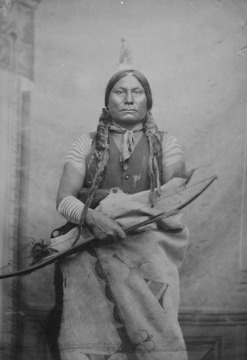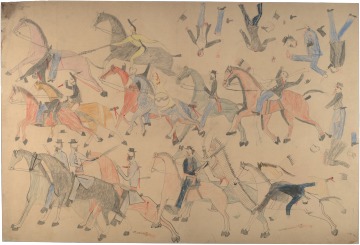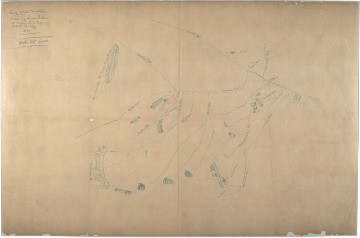1876: Custer defeated; Lakota and Cheyenne prevail
In the early spring of 1876, a Hunkpapa Lakota chief and holy man known as Sitting Bull (1831-1890) has a vision that foretells a victory over American soldiers attempting to march into a Lakota camp. On June 25 and 26, on the Greasy Grass River (which is now known as the Little Bighorn), 2,000 Lakota and Cheyenne, who are defending their summer hunting camp, fight and defeat U.S. troops led by Lieutenant Colonel George Armstrong Custer. Custer and the 209 soldiers fighting under him are killed. The Indians lose just 32 men.
“In the early morning hours of June 25th, 1876, the large village of Lakota’s and Cheyenne’s was observed from a high promontory in the Wolf Mountains. The village was 14 miles distant, to the West, in the valley of the Little Bighorn. From all indications the village was de-camping and scattering. Fearful that the village would disperse and escape, LTC Custer ordered his command to advance. In the rush to engage the Indians he divided the 7th Cavalry into four units in order to cover possible contingencies. The regiment went into battle piece meal. It became apparent that the assumptions of the early morning observations; that of a village escaping, were incorrect.
“The village was largely intact and from accounts had been surprised by the approaching cavalry contingents. Fortunately the warrior fighting force was able to concentrate overwhelming numbers against a now divided regiment and defeat it in detail. Approximately 380 members of the 7th Cavalry survived the battle after Major Marcus Reno and Captain Frederick Benteen reunited and developed a strong defensive position on high ground. LTC Custer and the 209 men in his immediate command were killed to a person because they had advanced to a position beyond the ability of the surviving parts of the regiment to support them.” —National Park Service, an account of the Battle of the Little Bighorn, http://www.nps.gov/libi/learn/historyculture/battle-story.htm
- Theme
- Land and Water
- Region
- Great Plains
Lakota Chief Gall, leader of the Lakota nation in the Battle of Little Big Horn, ca. 1881–1885
Courtesy National Archives and Records Administration
Lakota Chief Red Horse’s drawing of Indians fighting Custer's troops at Battle of Little Bighorn, 1881, created at the South Dakota Cheyenne River Agency.
Courtesy National Anthropological Archives, Smithsonian Institution
Lakota Chief Red Horse’s map of Little Bighorn battlefield. Map depicts battlefield, tipis, rivers, mountains, Cheyenne Agency, and Fort Burford.
Courtesy National Anthropological Archives, Smithsonian Institution


